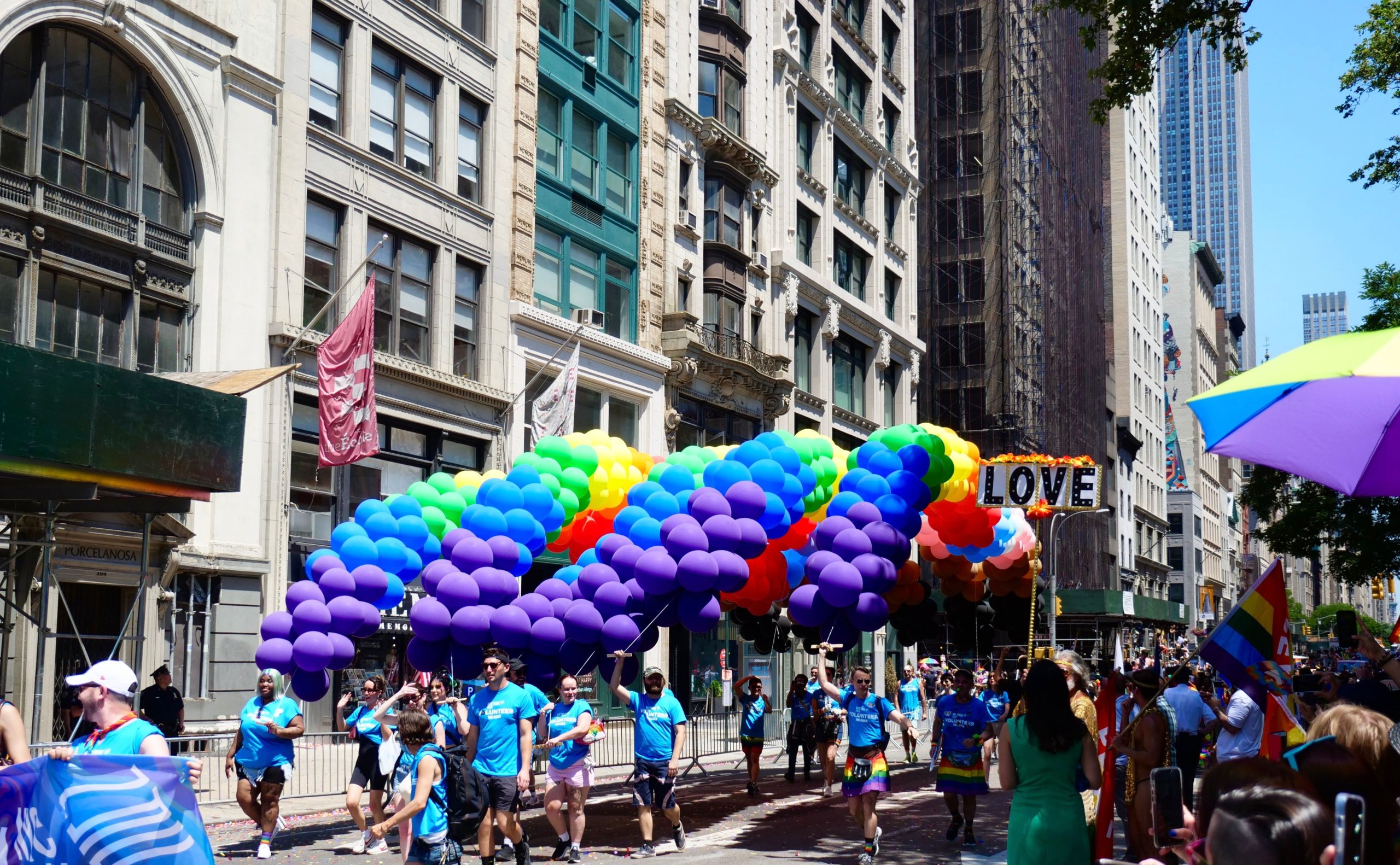Evolution of the Pride Parade Route
Jun 14, 2023

This year’s annual Pride March will take place on Sunday, June 25th, starting at noon. In honor of the event’s various routes, we’re highlighting the parade’s notable paths in Manhattan, from its initial launch in Greenwich Village on June 28, 1970 to the present kick-off location in the Flatiron District at 25th Street and Fifth Avenue.
The first Pride March, known as the Christopher Street Liberation Day March, appeared a year after a protest of a police raid at the Stonewall Inn, a gay bar, on June 28, 1969. “The Stonewall Riots,” notes nycgovparks.org, “sparked the modern movement for LGBTQ rights, as well as advocacy for the legalization of gay bars and the organization of the first NYC Pride March.”
According to npr.org, “the first Parade didn’t have celebrities or floats. It didn’t even have speakers. It wasn’t a parade at all, but a protest march.” The journey, writes baruch.cuny.edu, “started at 53 Christopher Street and continued up Fifth Avenue to end in Central Park. The march started with only a few hundred people at the Stonewall Inn and ended with several thousand by the time it finished in Central Park.” Marchers reportedly chanted ‘Say it loud, gay is proud,’ while holding bright red, green, purple, and yellow silk banners.
The 1973 march, however, began at Central Park West, then moved to Seventh Avenue down to Washington Square Park, and “appeared to be better organized, better financed and better attended than similar events in the past,” reported the New York Times on June 25, 1973. “They struck out down Central Park West and Central Park South carrying banners, such as ‘Gay is Proud,’ and amusing bystanders with chants such as ‘2-4-6-8, we don’t overpopulate.’”
In 1974, the parade returned to Sixth Avenue and uptown. In 1978, it relocated to Fifth Avenue and ended at Central Park’s Sheep’s Meadow. By 1981, the parade proceeded up Fifth Avenue to 79th Street, and ended at the Park’s Great Lawn. “In 1994, the 25th anniversary of the Stonewall Riots, the City changed the route significantly to begin at the United Nations and march up First Avenue, then west on 57th Street to Central Park,” wrote the Observer on June 26, 2015.
By 2010, however, the police reportedly decreed all parades be shortened by 25% and take no more than five hours. “That year, the parade began at 36th Street and took a turn on 9th Street instead of 8th Street to save time and budget,” noted the Observer on June 26, 2015. “The residents of 9th Street were upset by the parade’s shift onto their street, and it was returned to 8th Street the following year.” Since 2011, wrote the Observer, “beginning on 36th Street, the parade traveled down Fifth Avenue, crossing Christopher Street, passing The Stonewall Inn and ending in the Village.”
For the last few years, including now, Flatiron has been the mainstay as the event’s kick-off destination. Beginning at 25th Street and Fifth Avenue, notes nycpride.org, the parade will head south then west on 8th Street. After crossing over Sixth Avenue, it will continue on Christopher Street passing the Stonewall National Monument. The parade will then turn north on Seventh Avenue, passing the New York City AIDS Memorial, and end at 16th Street and Seventh Avenue.
Award-winning actor Billy Porter, asexual activist Yasmin Benoit, nonprofit leader AC Dumlao, activist Hope Giselle, and civil rights trailblazer Randolfe “Randy” Wicker will head this year’s parade celebration. The slogan “Strength in Solidarity” will be the parade’s theme, and will highlight, according to nycpride.org, “the cultural significance of the LGBTQIA+ community within the fabric of modern society, while acknowledging every individual’s uniqueness and ability to wield tremendous power when united with others.”
Header & Thumbnail Photo Credit: Flatiron NoMad Partnership







